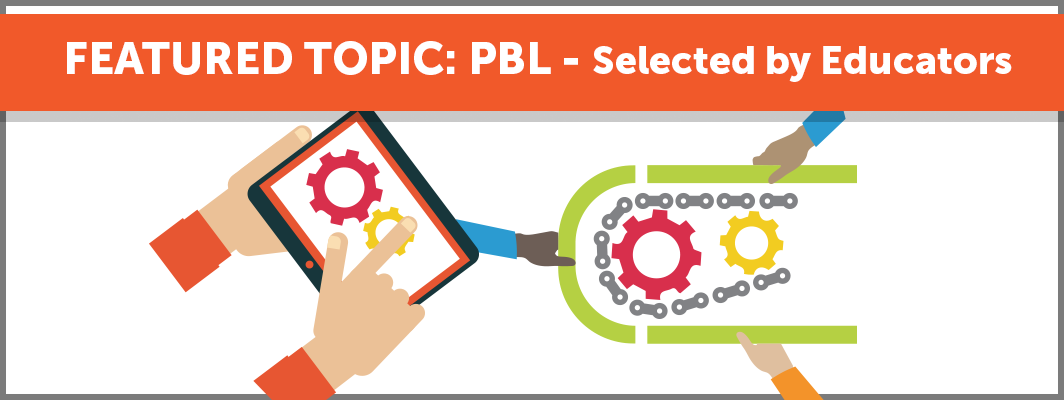
February 16, 2018 | By Babe Liberman
Last fall we set out to discover which education research topics K-12 practitioners want to know more about. More than 200 of you responded to our survey and listed project-based learning (PBL) as a top interest.
Pedagogical approaches related to PBL — such as problem-based learning and inquiry-based learning — share common features. They:
You told us you want to know more about the research behind PBL because it can provide real-world context for education, making learning meaningful and fun! Yet, many expressed confusion about the research behind this instructional practice, and how to implement it in a way that is most likely to improve student outcomes.
We hear you. PBL is an exciting and broad topic that schools and districts around the world are implementing in many ways, but it can be difficult to know where to start and which strategies are effective.
We’re pleased to launch PBL as the first Featured Topic on the Digital Promise Research Map. This new page includes a research summary with key findings, such as the the potential of PBL to improve student academic achievement and enhance student’s social emotional skill development. We’ve also curated practical resources to help you use a PBL approach in your classroom.
Check out the PBL Featured Topic Page
Project-based learning is not a new idea. Starting in the early 20th century, education philosophers and researchers – from John Dewey to Jean Piaget – advocated for active, experiential approaches that placed students at the center of the learning process. Currently, PBL is gaining in popularity as an appealing way to engage students in active, experiential learning.
But what does this look like in the classroom? Many educators are already using PBL with their students; below are some examples to spark your ideas.
Technological Pedagogical Content Knowledge (TPaCK) Coach Kayla Canario shared that the sixth grade science team is using projects for powerful learning. In one of those classes, teacher Emily Butterfield applies this approach in an engineering design unit, inviting students to solve problems through design. One of Emily’s students chose to help people who were undergoing cancer treatment. From interviewing and surveying chemo patients and the nurses working with them, the student found out that the patients were often uncomfortable when receiving treatment in hospitals. Many had a hard time relaxing and were experiencing stress. To address this challenge, the student decided to design scented pillows to distribute to the patients. She learned how to sew, and researched aromatherapy and essential oils. She put her new knowledge and skills together to solve an authentic problem, which is what PBL is all about. Emily’s student-driven and interest-based approach to teaching promotes the engagement and determination necessary for supporting real-world projects like this one.
Jeb Dickerson takes a slightly different approach when working with his freshmen. While he also builds choice into his class, he tends to provide more structure around the challenges and projects he poses to students. For example, Jeb and his colleague, Jen Anderson, are currently teaching Of Mice and Men through the lens of human rights. They will support students to build empathy, use textual evidence, and conduct interviews, all through a project that will culminate in students producing their own podcasts. Jeb has found that his class can be difficult for students who are new to taking ownership of their learning and have never directed a project from start to finish. While shifting some of the responsibility for learning to students rather than teachers can take time, it is an important component of PBL and an opportunity for student growth.
Digging into research findings can help practitioners address some of the challenges related to implementing PBL. For example, a recent study found that teachers can help students develop essential PBL skills by clearly stating learning goals, providing opportunities for students to reflect on and assess their work, and giving tips for structuring activities.
Ready to try this in your classroom? Read more about the research behind PBL, and search for new resources, on the PBL Featured Topic page.
By Elliott Barnes and Sara Mungall